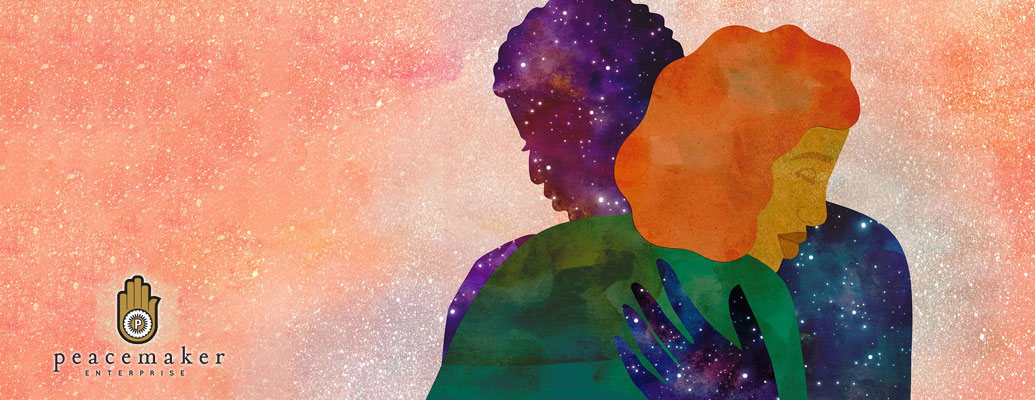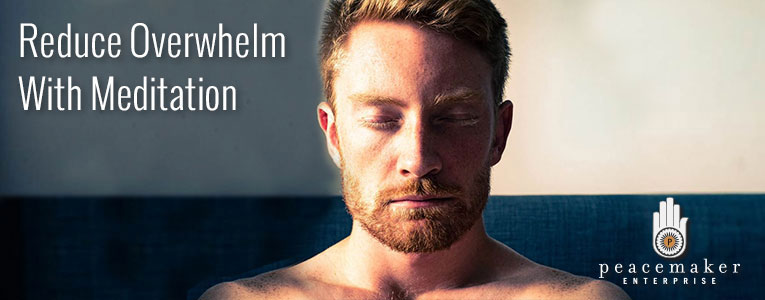You are about to go on a wonderful journey. This journey will invite you to think about becoming more compassionate to self, others and why the elements of compassionate care can have a positive influence on this planet for all living life forms.
This article pulled me into the emotional space where I needed to be for a long time. I was feeling lost, isolated and not good enough and had forgotten about showing myself the self-compassion that I deserved. I just could not find my way because I was so trapped in the distractions of my life.
I was able to remind the me inside that I cannot be the perfect person for every situation and that there are times for me to just let go, rest, and allow Spirit to take over.
It has always been easier for me to show compassion for others and much harder for me to show compassion to me. That lack of compassion for self has a great deal to do with the kind of family system that raised me.
This blog was written by Paul Condon, PhD, who is a professor of Psychology at Southern Oregon University in Ashland, Oregon. He did an excellent job of weaving the cultural elements of meditation, developmental psychology and the art of compassion and care.
He also created a space for the reader to reflect upon the many ways that our life experiences have shaped who and what we are today as humans. Professor Condon states, “the practitioner is learning to participate in a communal field of care in which the individual has been held by others across space and time.” Take time to enjoy his powerful words.
~Hitaji
Nurturing a Relational Mindset Compassion for each other is the basis for more authentic human connection—and can be cultivated through meditation.
This article first appeared on Mind and Life Institute on August 23, 2022
Featured image credit: A tender hug provides a metaphor for compassion. One of the two who are embracing embodies a starry night sky, representing the full universe that each of us is, beyond limiting labels. We invite readers to explore your own interpretation. Artist: Sirin Thada
When I was a junior in college, I signed up for a course on meditation and developmental psychology. On the first day of class, the professor asked each student to write on a notecard, “the voice in your head that you wish you didn’t have to listen to throughout the day.” I felt apprehensive. I didn’t know my classmates, and everyone appeared put together, attractive, confident, and more at ease than I felt. We privately wrote on our cards, turned them in, and a few moments later, the professor read aloud our statements:
“You are not worthy to be loved.”
“You will never amount to anything.”
“It’s only going to get worse.”
My perception of myself and my classmates instantly changed—from skepticism and distance to care and solidarity.
In that moment, I saw myself and the other students in a new light. We were united by an invisible thread of internalized self-criticism, shame, fear, doubt, and longing. Although we each had different experiences and situations, there was a shared depth of hidden suffering. Alongside doubts about our own worthiness for care, we also each expressed a desire for connection and care.
I came away from the class with an essential insight: Compassion for each other is the basis for more authentic human connection, and this capacity can be realized and strengthened through meditation. Although I had an intuitive sense of this born from experience in the class, I was inspired to learn more about compassion and to test these ideas using scientific methods.
Attachment and Compassion
Humans come prepared through evolution with innate capacities for empathy and compassion. Yet these capacities become attenuated in predictable patterns, especially when suffering is encountered repeatedly or under other challenging circumstances, such as trauma, neglect, or oppression. We naturally feel care for those that we like, but otherwise, we lean toward living in separation from one another, experiencing our suffering, anxieties, and stressors as a source of disconnection. What can we do to increase our sense of connection, our bonds with others throughout life?
The class I mentioned above was informed by attachment theory, an influential perspective in psychology that explains how early experiences with a caregiver (1) impact future relationships. (2) Caregivers help children navigate the world, especially in times of stress and difficult emotions. When caregivers are sensitive and responsive to a baby’s needs, they communicate in a preverbal way, “I’m here with you. It’s OK to have painful emotions. We can navigate them together.” This kind of support helps children to develop confidence and vulnerability to explore their world, with the trust that there is a safe haven to return to as needed. Attachment patterns accrue throughout the lifespan from all kinds of relationship experiences. These experiences get imprinted in the mind and influence how we perceive, or misperceive, connections with others.
All relationships have moments of rupture, and we each develop internalized voices that doubt the availability of care over the course of our lives. These moments establish and reinforce hidden voices of doubt, fear, self-criticism, and so on. We also develop corresponding strategies for managing external sources of care, for example, by not allowing others to really know or see us, relying on self-help, or striving to achieve recognition based on some external criteria for success. These internalized scripts are frail models for connection, and they point to a need for a pathway to more authentic care.
Around the same time during college, I learned about contemplative traditions and their emphasis on compassion, for example, through the writings of the Dalai Lama. Buddhism states that we all suffer, and we all want to be happy. This is a point where religion and science converge: Interdependence and compassion are the bases of survival. How can we cultivate compassion, and how might this improve human relations?
Does meditation make us more compassionate?
The early decades of contemplative science revealed that meditation has benefits for cognitive capacities, and physical and mental health. Since then, several studies using diverse meditation protocols and outcome measures have shown that meditation can also help us become more present to others’ suffering, less biased toward outgroups, and more willing to take action to benefit others. In an early attempt to understand the prosocial impact of meditation, my colleagues and I developed a research study—with support from a Mind & Life Varela grant—in which participants completed eight weeks of mindfulness or compassion training. We then tested the impact of the training on their behaviors within social interactions with others who were in pain.
Following the training, we created a situation where participants were sitting in a full waiting area before the final laboratory measures would be collected. While waiting, a woman approached the waiting area with the support of a walking boot and crutches. Because there were no available seats, she leaned against the wall, next to a row of seats filled by others. Unbeknownst to the study participants, all of the other people in the room, including the woman on crutches, were secretly working on behalf of the research study and ignored the injured woman on crutches, setting up a phenomenon called the bystander effect, in which the presence of non-responsive people reduces interventions to help.
The results were striking. Among those who had not completed any meditation, roughly 15% of people offered their seat to the woman on crutches. In contrast, among those who previously completed eight weeks of mindfulness or compassion meditation, nearly 50% of people gave up their seat. (3)
Since these findings were published in 2013, several studies have demonstrated other prosocial effects of meditation. Across laboratories of many different researchers, meditation training can lead people to donate more of their financial resources to others; take time to express more hopeful, optimistic, and caring messages to others—including people who have been convicted of murder; give attention to others’ suffering rather than avoiding or diverting attention away from suffering; and experience less bias and automatic judgment of others who hold different identities. Clearly, the data shows that meditation has potential to increase compassionate action in our world.
Clearly, the data shows that meditation has potential to increase compassionate action in our world.
Although we were encouraged that meditation could increase helping behavior, our study showed that 50% of people who trained in meditation did not give up their seat. Despite the evidence that meditation helps promote caring social behaviors, research suggests the possibility that it can also have opposite effects, making people more self-focused. For example, a study of a brief mindfulness meditation caused people to believe that meditation was important to their personal identity, and they believed they were better at meditation than others, which researchers call “self-enhancement.” (4)
A follow-up study demonstrated that the impact of meditation depends on people’s mindsets about their own identity. For those who hold a mindset that people are isolated individuals, meditation caused them to spend less time helping others. On the other hand, for people who held a relational mindset that people are interconnected, meditation increased helping behavior. (5) These results point to the power of the context in which practices unfold. The intentions and mindsets that we bring to meditation matter.
The Traditional, Relational Mindset for Meditation
In traditional Asian Buddhist cultures, the identity of a person is formed within a web of many relationships: with one’s family, familial and spiritual ancestors, the larger community, and with the natural landscape and environment. Within this web of relational support, a meditator’s orientation to contemplative practice is supported by the communities in which the person is embedded. When engaging in practices of taking refuge, spiritual aspiration, generosity, mindfulness, love, compassion, wisdom, and so forth, the practitioner is learning to participate in a communal field of care in which the individual has been held by others across space and time.
This communal field of care includes countless spiritual ancestors, teachers, and other accomplished practitioners across generations who have embodied practices of compassion and wisdom. Buddhist ritual and meditative practices are a doorway to connect with a vast community of compassion and wisdom that embraces one’s world. This relational mindset is akin to a powerful secure base for deep contemplative practice. Just as attachment figures (6) serve as a secure base from which children branch out and explore the world, the relational webs of support (7) in traditional Asian Buddhism have served as a safe haven from suffering and the mental afflictions for generations of practitioners before us.
In Western cultures, people think of themselves as individuals that exist prior to any relation to others—as atomistic selves who choose whether or not to enter into any relationship or community, as David McMahan states in The Making of Buddhist Modernism (2009). As a result, Western meditation practices were adapted into an individualistic mindset that reflects Western ways of thinking. These days, most people who take up a meditation practice might begin with a smartphone app, or by reading a book from the library or bookstore. Most of us begin meditation as a self-help practice with the mindset to improve qualities of mindfulness, care, patience, decrease stress levels, and so on. According to McMahan, this self-help approach is a novel form of meditation that is largely unrecognizable within the Asian Buddhist traditions that the practices originated from. This individualistic mindset for meditation might not be apparent to us when we engage in meditation, but it is a deeply rooted feature of our culture that we swim in, and risks inhibiting the greater potential of contemplative practice.
The individualistic mindset appears unique to modern Western, Euro-American cultures. Many of the world’s religious and Indigenous traditions are rooted in relational patterns of support. In Buddhism, foundational practices include calling to mind the Buddha or an enlightened community of practitioners while meditating on the unconditional qualities that they embody. Similarly, in Christian contemplative practices, practitioners understand themselves to be embraced in the divine grace of God. People of various Indigenous traditions across North America, Africa, and Asia invoke the support of their ancestors and the support of the natural world. An individualistic mindset for meditation is a unique construction in the world’s history of contemplative practice.
Yet a relational mindset for practice can pose challenges for modern Western culture, with its increasing individualism and growing mistrust in society, institutions, community, and family. The shift toward privatized religion leaves individuals free to adapt and make use of any element of a tradition they so choose. And the notion of individuals engaging in meditation practice as a means to grow in capacities of love, wisdom, and compassion through their own willpower and grit can ironically reinforce that which Asian Buddhists have always aimed to transcend: attachment to an autonomous, separate, enduring self that would impede fuller development of those capacities.
Without these relational supports for meditation, we miss the experience of being seen as worthy of love and care through the eyes of others who embody wisdom and compassion. But that is the kind of experience we need if we are to extend a similar power of love and care to others. How can a relational mindset be recovered for those of us conditioned by the excessive individualism of modern Western cultures? One possibility comes from the concepts and research findings of modern psychological science.
Adapting the Relational Mindset for a Broad Audience
It was through a Mind & Life event that I met an influential teacher and collaborator, John Makransky—a professor of Buddhist Studies and a meditation teacher in the Nyingma tradition of Tibetan Buddhism. John’s scholarship and teaching has focused on adapting Tibetan practices for modern contemplative practitioners. (8) Importantly, his teaching illustrates how a relational mindset for practice can be made through the qualities of care that are evoked by moments of caring connection.
During his teaching at the Mind & Life meeting, John asked us to recall and reinhabit a simple moment of caring connection, so as to experience its felt sense of unconditional love and care while being seen in our deepest worth and potential. John’s meditations provided a way for each person in the room to build their own relational doorway to meditation.
There are many such caring moments that I’ve unearthed through repeatedly engaging in this practice: Students laughing at my jokes during my classes at the university where I teach, memories of shared joy with my Japanese host family during a cultural exchange program in high school, and so on. These moments can be revisited within meditation to evoke qualities of care from our basic awareness, which provides an inner feeling of security that can grow stronger with repeated practice. Reconnecting with those moments helps build a secure base and relational mindset for practice—a place of security and protection in which our difficult emotions can unwind and reveal their own potential for healing from within. This growing capacity empowers our ability to be in touch with suffering, and to take action to alleviate others’ suffering without getting overwhelmed by our own emotions.
Because of “selective attention,” we might miss or neglect moments of caring connection even when they are right in front of us. In a famous study, people were asked to count the number of times that a basketball was passed between players on a given team. During the video, a person wearing a gorilla outfit walks through the middle of the court, waves at the screen, and leaves. In some versions of the study, up to 50% of people do not notice the gorilla because their attention is elsewhere, focused on the basketball. Caring moments can be similarly hidden in plain sight. Because our goals often direct our attention to economic or competitive strivings, we fail to notice the energy of care that pervades our lives.
Attachment theory helps explain how caring moments can fail to reach our awareness like the invisible gorilla. The dismissal of care can be an attachment script that we have learned as an attempt to protect ourselves from the vulnerability inherent in opening up to care. Unfortunately, these scripts interfere with our ability to access and relax into our innate compassionate capacities. For example, avoidant strategies can develop if we have experienced others’ care as unavailable or unreliable early in life. Then, throughout the lifespan, such scripts may lead us to dismiss or misconstrue other’s caring actions, even when we are not aware of it. We may completely miss genuine moments of care because our goals focus our attention in other ways. Our discomfort with vulnerability to care can lead us to filter out the caring moments that are happening all the time. Instead, we often subconsciously cling to those familiar scripts, from the sense that they offer some kind of protection and control. Throughout our lives, each of us is conditioned to develop a diversity of such scripts that trigger different impressions of self and others, which may prevent us from connecting with felt qualities of care more deeply.
To break free from bondage to attachment scripts and their limited models of ourselves, it is helpful, then, to learn how to become more conscious of, and receptive to, moments of care. We can gain more access to our innate capacities for care and compassion by noticing the felt qualities that come with those simple moments of connection, and allow our bodies, hearts, and minds to be infused with those qualities. In time, this can help us discover that those qualities are always available to us as potentialities of our basic awareness.
We can gain more access to our innate capacities for care and compassion by noticing the felt qualities that come with those simple moments of connection, and allow our bodies, hearts, and minds to be infused with those qualities.
Recently, one evening, my three-year-old daughter came out from her bath and began saying goodnight to all of the trees in our backyard. She said goodnight to the mountains and the trees from each of the living room and kitchen windows. I was stunned in that moment—by the care, delight, and simplicity that she expressed. It was simultaneously extraordinary and profoundly ordinary. I stood in my kitchen and felt that I was embedded in a field of care in that moment through her eyes on the world. Social psychologists have identified a phenomenon called moral elevation, in which our own capacities for care, altruism, and prosociality can be elevated by witnessing others’ kind actions. My daughter was serving as a conduit of care in that moment through her connection to the trees. By paying attention to simple moments of caring connection in our own life, we can populate our own field of care analogous to the fields of care that humanity has relied on for generations before us.
Becoming a Field of Care
It has been 15 years since I sat in the classroom for that simple, yet powerful exercise with the notecards. Now, I serve as the professor on the other side of the desk, and have carried out the same activity in my courses. Strikingly, the same themes and inner voices appear despite the generational divide. Students continue to feel a sense of separation and doubt—fostered by our inherited cultural and social norms. These struggles and the loss of caring connection have been intensified by a global pandemic, political polarization, racial injustice, gun violence, and climate disasters.
Despite the challenges we face, we can foster connection, love, respect, and human dignity—to become an extension of the fields of care that we have been held in over generations and lifetimes. One community-based approach, the CourageRISE model implemented by Courage of Care, offers a roadmap for a more compassionate society grounded in fields of care. This model (9) begins by embedding people in relational practices of love and care, followed by practices and inquiry to: Reveal truths of oppression, Invest in healing, Sense alternatives, and Embody beloved community. Within this community context, each participant has an opportunity to engage in contemplative practice while practicing authentic dialogue around the difficult issues our society faces. This process can be a joyful way to deepen our humanity and our connection with each other.
Despite the challenges we face, we can foster connection, love, respect, and human dignity—to become an extension of the fields of care that we have been held in over generations and lifetimes.
Through a relational mindset for meditation, we can access the courage needed to recognize patterns of destruction in our own habits and to envision and embody alternative ways of being. The resources for this are already available to us. We can each draw on concepts and sources of meaning from our lived experience, in our own bodies and minds, to discover a more infinitely secure base and learn to embody more care, curiosity, and collaboration.
Notes
- Saltman, B. (2020). Strange situation: A mother’s journey into the science of attachment. Ballantine Books.
- Karen, R. (1994). Becoming attached: First relationships and how they shape our capacity for love. Oxford University Press.
- Condon, P., Desbordes, G., Miller, W., & DeSteno, D. (2013). Meditation increases compassionate responses to suffering. Psychological Science, 24, 2125–2127. https://doi.org/10.1177/0956797613485603
- Gebauer, J. E., Nehrlich, A. D., Stahlberg, D., Sedikides, C., Hackenschmidt, A., Schick, D., … & Mander, J. (2018). Mind-body practices and the self: Yoga and meditation do not quiet the ego but instead boost self-enhancement. Psychological Science, 29, 1299–1308. https://doi.org/10.1177/0956797618764621
- Poulin, M. J., Ministero, L. M., Gabriel, S., Morrison, C. D., & Naidu, E. (2021). Minding your own business? Mindfulness decreases prosocial behavior for people with independent self-construals. Psychological Science, 32(11), 1699–1708. https://doi.org/10.1177%2F09567976
- 211015184 [Free preprint]
- Condon, P., & Makransky, J. (2020). Recovering the relational starting point of compassion training: A foundation for sustainable and inclusive care. Perspectives on Psychological Science, 15, 1346–1362. https://doi.org/10.1177%2F1745691620922200 [Free preprint]
- Condon, P., & Makransky, J. (2022). Compassion and skillful means: Cultural adaptation, psychological science, and creative responsiveness. Mindfulness. https://doi.org/10.1007/s12671-022-01866-y [Free preprint]
- Portions of this section were adapted from Condon, P. (2021). You can take refuge right here. Buddhadharma, 19 (4), 42–55. [Online article]
- Lavelle, B., Vigna, A., Walsh, Z., & Porter, E. (2021). Relationshift: The CourageRISE model for building relational cultures of practice. The Arrow: A Journal of Wakeful Society, Culture, & Politics, 8, 130–152. [Online article]




